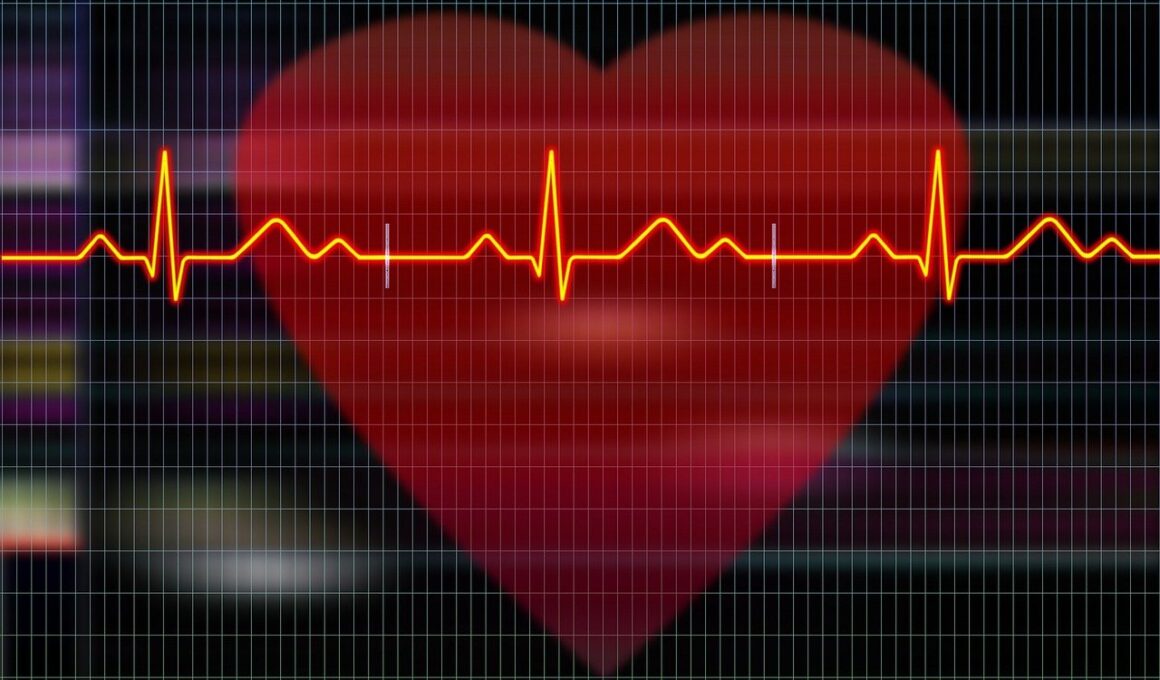Heart Rate Variability and Its Connection to Cardiovascular Fitness
Heart rate variability (HRV) measures the time differences between heartbeats and is crucial for understanding cardiovascular health. A higher HRV is often associated with better cardiovascular fitness and improved overall health. Regular physical activity can enhance HRV, thereby indicating a strong autonomic nervous system. This improvement in HRV signifies better recovery from stress and more resilience to environmental changes. The two major components of HRV are sympathetic and parasympathetic activities. The sympathetic nervous system prepares the body for emergencies, while the parasympathetic promotes relaxation and recovery. When one engages in regular aerobic exercise, such as running or cycling, it tends to bolster the parasympathetic activity and can elevate HRV. However, too much stress or insufficient recovery can lower HRV, indicating overtraining or inadequate rest. Monitoring HRV can be a promising approach for athletes to fine-tune their training regimens. Furthermore, incorporating mindfulness techniques, like meditation and deep breathing, can positively affect HRV. Overall, higher HRV signifies an adaptive and well-functioning cardiovascular system, making it an essential parameter for athletes and health enthusiasts alike.
The Importance of Rest and Recovery
Rest and recovery are vital components of any physical training regimen, especially concerning HRV. Adequate recovery allows the body to adapt and grow stronger after rigorous workouts. During this period, the body repairs itself and replenishes its energy stores. Insufficient rest can result in fatigue, decreased performance, and lower HRV readings. Athletes often overlook sleep quality, which plays a crucial role in recovery. Quality sleep aids in regulating various hormones and restoring energy levels. In addition to sleep, active recovery days can also improve HRV. Gentle activities, such as yoga or light walking, can promote blood flow and enhance recovery without adding extra strain on the heart. It’s important to recognize the signs of overtraining, such as irritability, fatigue, and declining performance. Tracking HRV can help identify when your body requires more recovery. Athletes who consistently monitor their HRV can make informed decisions about their training intensity and recovery protocols. Personalized recovery strategies, combined with regular rest, can optimize cardiovascular fitness and overall performance, making HRV a valuable tool in achieving fitness goals.
Another essential factor in understanding HRV is the impact of stress on cardiovascular health. Stress activates the sympathetic nervous system, leading to increased heart rates and potentially decreased HRV. Chronic stress can keep sympathetic activity elevated, which may have negative health implications. Stress management techniques, including mindfulness meditation, can significantly improve HRV. Furthermore, engaging in activities that promote relaxation, such as spending time in nature or practicing yoga, encourages the parasympathetic nervous system’s activity, leading to recovery and increased HRV. When individuals effectively manage their stress, they may notice improvements in their cardiovascular fitness and overall well-being. Monitoring HRV through wearable technology allows for better awareness of how stress affects the body and performance. By understanding the relationship between stress and HRV, athletes can modify their training plans accordingly. Integrating stress management practices helps maintain a balanced mental and physical state, leading to enhanced athletic performance. In conclusion, addressing stress and its impact on HRV can significantly contribute to improved cardiovascular fitness and recovery.
Nutrition and Its Role in HRV
Nutrition plays a significant role in influencing heart rate variability (HRV) and overall cardiovascular fitness. A balanced diet rich in whole foods, especially fruits, vegetables, and lean proteins, provides essential nutrients that support heart health. Omega-3 fatty acids, found in fatty fish, nuts, and seeds, can significantly enhance HRV levels. These healthy fats possess anti-inflammatory properties, reducing the risk of heart disease and improving recovery capabilities. Conversely, excessive consumption of processed foods, sugars, and unhealthy fats can lead to inflammation, negatively impacting HRV. Staying hydrated is also crucial, as dehydration can lead to increased heart rates and lower HRV. Including electrolytes like potassium and magnesium in your diet can help maintain cardiac function and support HRV. Moreover, adopting a regular eating pattern with consistent meal timing helps maintain stable blood sugar levels, which can positively influence HRV. Lastly, managing caffeine and alcohol intake can significantly shape HRV outcomes. Being mindful of nutritional choices is crucial for optimizing heart health and sustaining peak physical performance in long-term fitness endeavors.
Moreover, regular exercise is foundational in enhancing HRV and cardiovascular fitness. Engaging in cardiovascular activities such as running, swimming, or cycling leads to improved heart efficiency, directly influencing HRV. Aerobic exercises promote the development of a robust cardiovascular system, enhancing autonomic regulation and overall heart health. Resistance training also contributes to HRV increases, building muscle strength and improving metabolic health. It’s important to balance both cardiovascular and strength training for optimal results. However, understanding the intensity and frequency of workouts is crucial; overexertion can lead to a decrease in HRV due to inadequate recovery. Hence, incorporating rest days and varying training intensities can promote better HRV outcomes. It’s also essential to set realistic fitness goals, as striving for unattainable targets can lead to pressure and stress, undermining HRV potential. Individuals should aim for a training approach focusing on progression and enjoyment rather than sheer volume. Furthermore, community-based training environments can enhance motivation, which positively impacts mental health and recovery. Maintaining an active lifestyle with social support fosters overall well-being, enhancing both HRV and cardiovascular fitness.
Technology and HRV Monitoring
In today’s digital world, various technologies have made tracking HRV easier and more accessible to the average person. Wearable gadgets, like smartwatches and fitness trackers, provide valuable insights regarding HRV fluctuations. These devices gather heart rate data and apply algorithms to calculate HRV, allowing users to assess their cardiovascular status continuously. Many applications provide personalized feedback, indicating when to adjust training intensity or take recovery time. Such feedback can also guide users in recognizing patterns between their lifestyle choices and HRV responses. Analyzing daily stressors, sleep quality, nutrition, and physical activity can help improve overall HRV and cardiovascular fitness. Moreover, employing automatic reminders to monitor heart rates during rest or after workouts can encourage consistency in tracking. Understanding one’s HRV data can empower users to take charge of their health journeys, fostering proactive approaches in fitness. However, it’s crucial for individuals to educate themselves on interpreting HRV data accurately to avoid misunderstandings. Combining technology with a solid knowledge base enhances the effectiveness of HRV monitoring in achieving optimal cardiovascular health.
As we conclude our discussion on heart rate variability and its pivotal role in cardiovascular fitness, it’s clear that HRV offers valuable insights into overall health. Implementing lifestyle changes like regular exercise and stress management can greatly improve HRV. Following a balanced diet rich in nutrients further enhances cardiovascular health and recovery. Technology facilitates this process by allowing real-time monitoring of HRV, empowering individuals to make informed adjustments in their fitness routines. Overall, understanding the connections between HRV, stress, nutrition, and physical activity creates a holistic view of health. Athletes and fitness enthusiasts should consider HRV analysis as a critical part of training. Establishing individualized workout and recovery protocols based on HRV readings can maximize performance and enhance general well-being. Furthermore, general awareness regarding heart health encourages communities to adopt healthier lifestyles. As research in this area continues evolving, the future holds exciting possibilities for the integration of HRV analysis in everyday fitness routines. With awareness, education, and technology combined, individuals can achieve their cardiovascular fitness goals while enhancing overall health.


